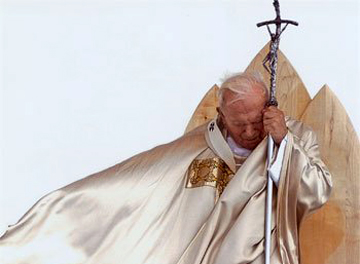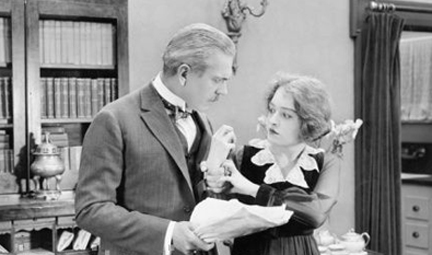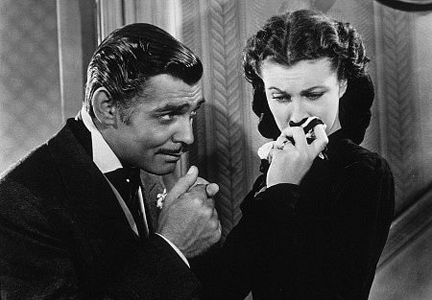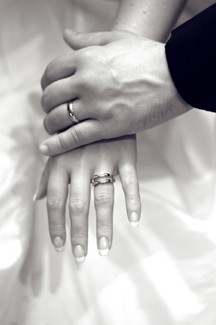
As promised, here is my first post on Dietrich von Hildebrand’s Purity: The Mystery of Christian Sexuality (originally published as In Defense of Purity). It is probably longer than will be my other posts on the book. We will see. I thought there were some basic ideas about “shame” that I wanted to establish from the beginning. Part of my work here will be to do a comparative study of von Hildebrand’s writing on Purity vis-à-vis John Paul II’s Theology of the Body.
Book I: Purity; Part I: Sex; Chapter I: Sex Distinguished from Other Bodily Appetites
There could be no greater mistake than to explain the tendency to conceal sex as exclusively, or even primarily, an endeavor to hide something disgraceful or ugly (Purity 6).
Catholic tradition describes this tendency to conceal sex as “modesty.” It is a certain kind of shame. We would do well to understand what it is and what it is not.
The shame of English
In his book, Purity: The Mystery of Christian Sexuality, Dietrich von Hildebrand distinguishes between different kinds of shame. Some kinds of shame are, in fact, a reaction against what is “disgraceful or ugly.” Yet not all shame is so. Some kinds of shame are a form of reverence. For example the French word pudeur is translated into English as “shame”; however, it has the nuance of “holy bashfulness” for which there is no equivalent in English.
This limitation of the English language is an impoverishment of our ability to speak of this basic human experience in a precise philosophical way. We call both the fear of the ugly and disgraceful and the awe of the holy and mysterious, “shame.” In other languages this is not the case.
The particular problem with the English word is that it has a primarily pejorative sense. Very few people would ever consider using the word “shame” in reference to a reaction which actually positive. When, for example, we are caught an evil deed we might admit that we are ashamed of ourselves. However, if someone complemented us in public unexpectedly, most of us would not say that we were “ashamed,” but “embarrassed.” But even this latter word is ambiguous, because sometimes were are embarrassed also because we look foolish or out of step.
My use of the phrase “shame on you,” in a previous post was meant to underscore the limitation of our use of the English word. Hence, among English speakers, when we are discussing our reaction to holy things, mysteries and aspects of our lives that are deeply personal and intimate we often use the words “modesty,” and “reverence.”
In matters of sexuality these ambiguities are particularly crucial because of the depth at which we experience our sexuality and, thus, because of the way in which the experience of sexuality, can have tremendously positive and negative values. We might very well be “ashamed” of sex, because we are intuitively or meditatively aware of how holy and mysterious it is, or we might be “ashamed” of sex because our experience of it has been unspeakably debauched and profoundly disrespectful of God, ourselves and others. We might also be ashamed of sex—it is true—because in our sinfulness we are no longer able to perceive its beauty and begin to project onto it the disorder of our own heart. Or finally, we may be ashamed of sex, because we hold the heresy that sex and the body are evil. Whatever our experience in this regard might be, our heart tells us that the matter in question is profoundly important. We cannot afford to confuse these various experiences, because they are truly different and touch directly upon our practice of the virtue of purity.
Our Secret

In the first chapter of von Hildebrand’s Purity, he distinguishes sharply the sex drive from other bodily appetites on the basis of the depth at which we experience these various appetites. Our other bodily appetites such as hunger and thirst are experienced on a relatively superficial level and ordinarily do not become the focus of our deep and serious attention, except when we they become a question of our survival (3).
It is one thing, for example to give one’s attention to the preparation of food in proportion to the general welfare of individuals, say a family and both its nutritional and social needs. It is another to be obsessed with food and the particulars of its preparation. It is still another to become profoundly aware of how dependent we are on food, when one is starving to death. The fact is that we generally experience such bodily desires on a superficial level and only experience them deeply in a moment of crisis.
On the other hand, von Hildebrand says that our sex desire is essentially deep:
Every manifestation of sex produces an effect which transcends the physical sphere and involves the soul deeply in its passion. . . The positive and negative values attaching to sex belong to a level far deeper than those which attach to the other bodily appetites. Indeed, these sexual experiences are characterised by a specific character of mystery . . . (4).
Von Hildebrand says that the depth of sexual experience is established by two factors: the uniqueness of the manner in which body and soul meet in the experience of sex; “the particular intimacy of sex.”
In this chapter of the book, he focuses on the second factor and calls sex “the secret of the individual”:
It is something which the person concerned feels to be altogether private, something which belongs to his inmost being. Every disclosure of sex is the revelation of something intimate and personal. It is the initiation of another into our secret. It is for this reason that the domain of sex is also the sphere of shame in its most characteristic sense. We are preeminently ashamed to unveil this secret to others. Whether and man is modest or immodest depends first and foremost on his attitude to sex (5-6).
It seems to me that von Hildebrand’s analysis accord’s exactly with universal experience of man and is so close to us that generally most people never examine the causes of our reactions. But when we hear a wise man like von Hildebrand express the truth of it, we say, “Yes, that’s it.”
The fact is that our sexuality is tied to our deepest identity as a person and to the mystery of what it means to be a person. We are vulnerable in our sexuality because we are vulnerable as persons who desire to love and to be loved and who never wish to be used. We “expose” ourselves to others in the degree to which it is appropriate to communicate our person and we leave the most intimate revelations to a select few and in some cases to one alone. Our secret is ourselves, and in the end it is the only thing we really can call our own. It is the only real gift we have.
The Spousal Meaning of the Body

Dietrich von Hildebrand’s analysis seems to me to be in full accord with that of John Paul II, though the emphasis is different. Von Hildebrand emphasized the positive aspect of shame relative to the mystery of the person, whereas John Paul II emphasizes the negative aspect relative to the danger of objectifying the person.
When in the Theology of the Body the pope writes about the “spousal meaning of the body” in the context of original innocence, in which man, male and female, were naked and felt no shame, he is speaking of the fact man, male and female, is created for love and is oriented by creation toward making the gift of himself to the other (14.5). It is in this way, as Genesis tells us, that man is created in the image and likeness of God (1:26). In other words the communio personarum (communion of persons) to which man is called is a reflection of the life of the Father, Son and Holy Spirit, the Trinitarian communion of knowledge and love (9.1-3).
This truth is written in the human body, differentiated as male and female, and the bodily union to which man is called in marriage is a sign of the deeper communio personarum of spouses. That deeper communion is charity and the conjugal embrace, as it was intended from the beginning, is not only its sign but through chaste love and sacramental living it becomes a particular means of achieving it (29.3; 131.2-3).
In the state of original innocence the deep meaning of the body was not distorted by the subordination of the gift meant to be loved to its use for selfish gratification. The interiority of man shined outwardly in its entire splendor, with no confusion of its meaning. Not only was the gift unthreatened by the tendencies of fallen nature, but we might also say that for that reason it was less mysterious and more radiant.
Veiling and Unveiling the Mystery
 In terms of the importance of this appreciation for the state of original innocence relative to our own state of fallen nature, which we are offered in the Theology of the Body, it is necessary to define and understand the dimensions of the analogy which the Holy Father is using. There is, of course, the sense that Adam and Even represent universal man, male and female, and are a paradigm for the relation of the sexes in general. But there is also the sense in which Adam and Eve as two real persons are created male and female for each other personally. In fact, Eve is specifically created as a person to be the helpmate of the only other human person, Adam. So, it seems to me, that while the relationship of Adam and Eve can be used analogously to represent the relationship of all men and women in general, they are more properly an analogy of the relationship of husband and wife specifically. The importance of this is relative to the origin of shame and, what John Paul II (prior to his elevation to the papacy, as Karol Wojtyla) called the “absorption of shame by love” (Love and Responsibility, San Francisco: Ignatius Press, 1981. 181).
In terms of the importance of this appreciation for the state of original innocence relative to our own state of fallen nature, which we are offered in the Theology of the Body, it is necessary to define and understand the dimensions of the analogy which the Holy Father is using. There is, of course, the sense that Adam and Even represent universal man, male and female, and are a paradigm for the relation of the sexes in general. But there is also the sense in which Adam and Eve as two real persons are created male and female for each other personally. In fact, Eve is specifically created as a person to be the helpmate of the only other human person, Adam. So, it seems to me, that while the relationship of Adam and Eve can be used analogously to represent the relationship of all men and women in general, they are more properly an analogy of the relationship of husband and wife specifically. The importance of this is relative to the origin of shame and, what John Paul II (prior to his elevation to the papacy, as Karol Wojtyla) called the “absorption of shame by love” (Love and Responsibility, San Francisco: Ignatius Press, 1981. 181).
The consideration here is that is that prior to the fall there was only husband and wife, who were, in fact, called to that intimate revelation and communion of persons to which spouses are called. While we might speculate on what the relationship of the sexes in general might have looked like had our first parents not fallen and then proceeded to propagate the human race, I think we are at somewhat at a loss to know what the lack of shame might have been relative to individuals who were not called to reveal the full mystery of their person to others, e.g. unmarried persons, persons relative to others who were not their spouse, persons called to virginity.
Or on the other hand, in a world before shame, were we all called to reveal ourselves completely to each other, even to others who were not our spouses? Does the redemption of the body, then, mean that not only is shame resolved relative to the body but that we are also called now to not fear being vulnerable to a lack of privacy regarding our person?
John Paul II’s description of shame, resulting from the fall of our first parents, emphasizes the need to protect the value of the person and to defend it from being objectified. Shame is, then, a kind of fear, and a “defense reflex” which arises out of our vulnerability caused by the effects of original sin. Now, while John Paul II analysis does tell us what life would be like for spouses if that vulnerability were absent, it does not tell us what the relationship of the sexes would be like in general, since all men are not all spouses of all women.
By their vocation spouse are called to reveal their person and become an unreserved gift to the one to whom they have vowed themselves. But that revelation and gift is not meant for everyone. Since before the fall there were only two people, one male and one female and these two were, in fact, spouses, the state before the fall does not offer us a perfect paradigm for the relationship, say of men and women who are courting, or who may have no relationship at all but must treat each other with the respect of modesty.
While the human body always has a spousal meaning, that meaning as it pertains to my body specifically is not meant to be revealed in the same way to all. And, therefore, a reluctance to reveal too much to the wrong person is merely defensive of personhood against one who might be disposed to use me; it is defensive of personhood toward one who does not properly belong to that level of intimacy.
Vindicating the Mystery of Personhood

In the Theology of the Body John Paul II seems to recognize that shame is not only a defense mechanism against the possibility of being used, but also a vindication of the mystery of personhood:
A person of developed sensibility crosses the limit of that shame only with difficulty and inner resistance. This is clear even in situations that otherwise justify the necessity of undressing the body, for example, in the case of medical examinations or operations (61.2).
In no way does this spontaneous and intuitive “inner resistance” represent prudery or Manichaeism or an ignorance of the truths contained in the Theology of the Body. The Holy Father says that this reaction is found in those of “developed sensibility.” It is perfectly wholesome and compatible with great virtue. In fact, in the context of defending this “inner resistance,” the Holy Father says that original shame “is a permanent element of culture and morality. It belongs to the very origins of the ethos of the human body” (61.3).
According to the Theology of the Body, shame acts as a “veil” over the mystery of personhood in which man discovers himself as the guardian of that mystery and the defender of the “freedom of the gift” (19.2). This action, it seems to me, is not primarily negative, because wherever something is defended against abuse, there is more fundamentally an affirmation of inherent value.
Interesting to note in this regard is that in Love and Responsibility, which is not a document of papal magisterium but is the work of the man Karol Wojtyla, we find more about this positive element of shame than we do in the Theology of the Body. One reason for that may be because the specific context of his remarks on shame in TOB is the examination of our first parents before after original sin in the context of sacred scripture; whereas, in Love and Responsibility Karol Wojtyla reflects on human experience in general.
In Love and Responsibility, Wojtyla vindicates the preservation of privacy in certain matters and argues that the desire for this privacy is not primarily motivated by fear, but by a certain “fittingness.” Fear, indeed, arises when that appropriate privacy is endangered, but it is indirect and secondary (174-175). He says:
The essence of shame goes beyond such fear. It can only be understood if we heavily emphasize the truth that the existence of the person is an interior one, i.e. that the person possesses an interior peculiarly its own, and that from this arises the need to conceal (that is, to retain internally) certain experiences or values, or else withdraw with them into itself (175).
Again, this seems to perfectly accord with what Dietrich von Hildebrand says about the interiority of the person, about sex being the “secret of the individual” and the tendency to protect that secret as one that perfectly corresponds to the mysterious and precious nature of the person.
Emotional Shame
 In Love and Responsibility Karol Wojtyla makes the distinction between two kinds of shame relating to sexuality: physical shame and emotional shame. Physical shame seeks to conceal certain parts of the body to the extent that the value of the person is vindicated and defended from being used, while the sexual values are able to “still be a point of origin for love.” Emotional shame seeks to conceal “reactions and feelings” that tend to move one to reduce persons to objects of use by way of their body and sexuality. In particular, but not exclusively, physical shame is the province of women, while emotional shame is the province of men (187).
In Love and Responsibility Karol Wojtyla makes the distinction between two kinds of shame relating to sexuality: physical shame and emotional shame. Physical shame seeks to conceal certain parts of the body to the extent that the value of the person is vindicated and defended from being used, while the sexual values are able to “still be a point of origin for love.” Emotional shame seeks to conceal “reactions and feelings” that tend to move one to reduce persons to objects of use by way of their body and sexuality. In particular, but not exclusively, physical shame is the province of women, while emotional shame is the province of men (187).
It is in regard to emotional shame that the popularization of the Theology of the Body has particular resonance, because it is men, more than women, who struggle with issues of sexual temptation. Karol Wojtyla points out that
[t]his internal ‘shame of feelings’ has nothing in common with prudery. Prudery consists in the concealing one’s real intentions with regard to persons of the other sex or with regard to sexual matters in general. A prudish person intent on exploitation tries to make it appear that he has no interest at all in such matters—indeed he is prepared to condemn all, even the most natural, manifestations of sex and sexuality. Such behavior is, however, very often not to be explained as prudery—which is a particular form of hypocrisy, a way of disguising one’s intentions—but by some prejudice or other, perhaps the belief that everything to do with sex can only be an object for use, that sex merely gives the opportunity for sexual release and does not open the way to love between people (188).
In order to understand what belongs to a healthy reaction of a man to the sexual values of a woman one must appreciate fully what Wojtyla is saying here. Wholesome shame is to be sharply distinguished from prudery. And further prudery is not the same thing as the Manichean tendency to devalue or repudiate the goodness of sexuality.
In fact, Wojtyla goes on to say:
True emotional shame cannot possibly be identified with prudishness. Emotional shame is a healthy reaction within a person against any attitude to another person which disregards that person’s essential value, degrading him or her to the level of an object for sexual use (188).
All this points to the fact that the possible reactions of men to the sexual values of women are many and the psychology of those reactions are complex. Certainly, there is nothing in the Holy Father’s writings that would suggest that the tendency to conceal sexual values or to practice custody of the senses relative to sexual values is prudery, or that it only belongs to a lower level of moral behavior. Nor does seem to me that John Paul II says anything to encourage the students of the Theology of the Body to analyze individuals or make generalizations about practical behavior where the individual conscience must be the judge within its own domain.
Voyeurism

If I might be indulged for a moment for a bit of cultural commentary, I would say that our age is at particular risk of living shamelessly, not only because of the reduction of people to mere sexual values by so much of culture, but also because the general cultural tendency to keep nothing private. We are almost constantly broadcasting with cell phones, email, instant messaging, text, picture and video messaging, Facebook, Twitter and reality television. Is there anything about our persons that we choose not to broadcast to the world anymore?
Please, no angry comments. This is not a condemnation, just an identification of a risk.
It would be a complex task to unravel the cause and effect relationship. More than likely, the relationship of sexual shamelessness and, if you will, psychological shamelessness is reciprocal. Whatever the case may be, the coincidence of these two aspects should send up a red flag. We are culturally shameless. I cannot help to point out that the cultivation of purity and a healthy, enlightened and exalted view of the body and sexuality will be undermining itself if it minimizes the role of wholesome and sensible shame.
Victorious Secret

In a book published much later (1966) than Purity, Dietrich von Hildebrand, writing the original work in English (Purity was original published in German), choose to speak about wholesome shame in with different vocabulary than he had in the past. In Man and Woman: Love and the Meaning of Intimacy he writes the following:
Shame wants to hide ugly things, whether they are physical or psychical. We feel shame when others speak of our cowardice or our weakness.
But shyness, which is often confused with shame, reveals our reluctance to exhibit beautiful and noble things if they are intimate. . . . This shyness, referring to things which we hide not because we believe them to be ugly but because they are intimate and their specific value calls for secrecy, is absolutely the right response to the sphere of sex (Manchester: Sophia Institute Press, 1992. 58).
So, von Hildebrand opts for the use of the word “shyness” to describe that kind of shame which is protective of one’s secret. That particular word does us the favor of eliminating the connotation of the word “shame” that is so easily identified with prudery and Manichaeism.
Abandoning this kind of shyness is like abandoning mystery. True, one day the mysteries of God will be revealed, but never fully because they are infinite and eternity is not long enough to exhaust them. For an even greater reason, then, are these mysteries to big to be fully revealed in this life. Not even in the great saint, theologian and mystic, Thomas Aquinas, were the mysteries fully revealed, at least not in a way that could be expressed in speech or in a body of teaching. After an extraordinary mystical experience St. Thomas referred to his great work of theology, the Summa Theologiae, as “so much straw.”
If the truth about sex is such great news, because it is so beautiful and sacred, then this is a reason for holy shyness, not a reason to take everything off in public. Such unveiling certainly is not the answer to prudery as von Hildebrand writes:
So, we must understand that the true antithesis to Victorian prudery is a reverent attitude towards sex, seeing in it something great, deep and mysterious, whose existence one should not try to deny, but which by its very nature is intimate, and has the character of a secret (59).
Sex is something deep and mysterious that touches the heart of what it means to be a person and to be called to love and be loved. Holy shyness or modesty is the vindication of those values, or as Karol Wojtyla wrote in Love and Responsibility:
sexual modesty is not a flight from love, but on the contrary the opening of a way towards it. The spontaneous need to conceal mere sexual values bound up with the person is the natural way to the discovery of the value of the person as such (179).
Dietrich von Hildebrand and John Paul II are kindred spirits.
























